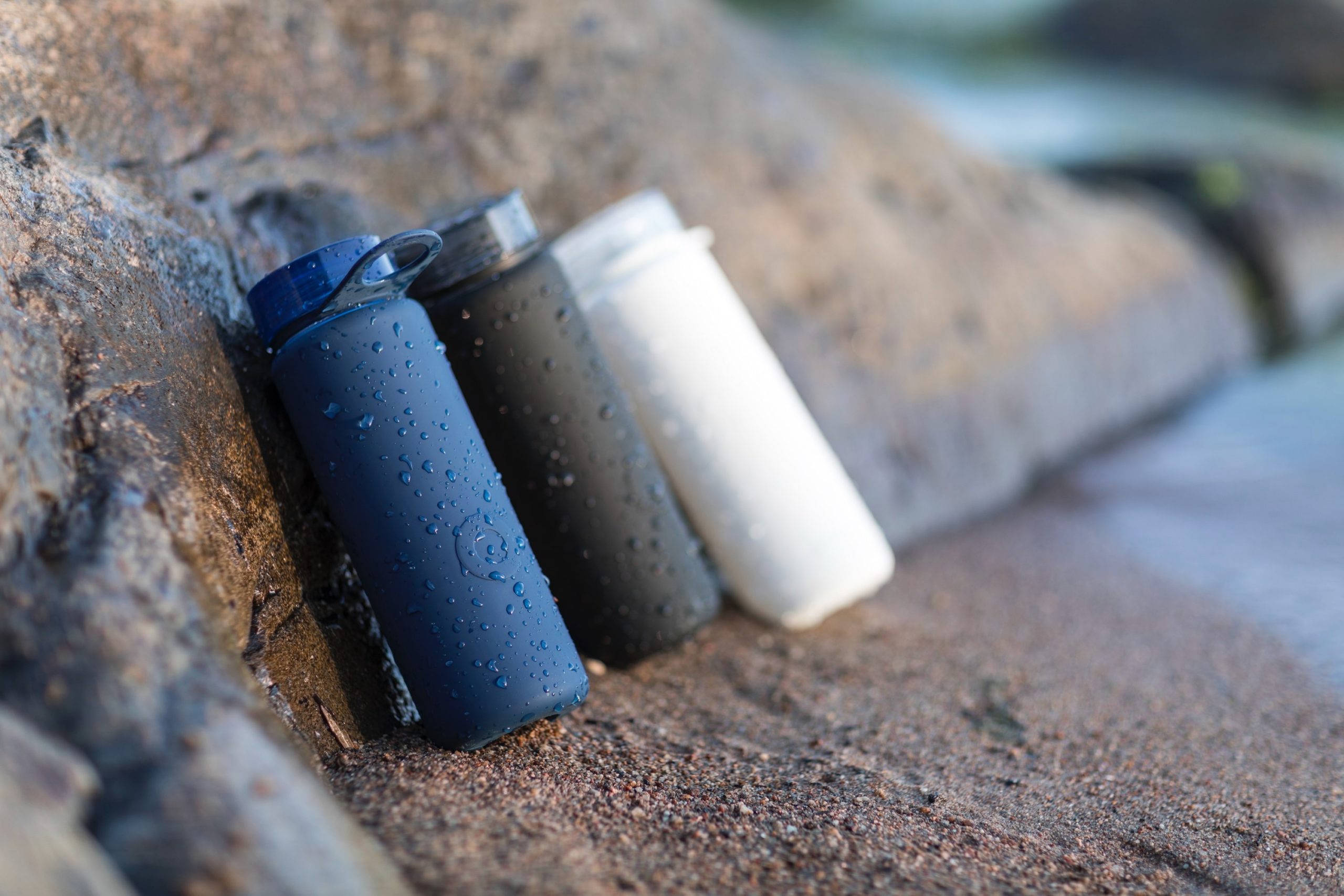
Now that summer’s heat is in high gear, let’s talk about how to stay safe and healthy while you’re working up a sweat— or even if you are just out for a leisurely walk with the dog. The main way your body cools itself is through sweat and in order to sweat, we need to use our reserves of water and electrolytes. Since our body cannot store vast reserves of water or electrolytes, we need to replenish them throughout the day. You have heard of the dangerous risks of heat stroke or heat exhaustion, which we want to avoid. Early warnings of a hydration problem can be muscle cramps – with or without thirst. Let’s avoid all these problems with a few proactive habits.
Here are our top five tips for staying hydrated:
Tip 1: Start Your day right
While you sleep you may heat up and/or sweat, especially in the summer months. Even if you don’t sweat, you are losing hydration because the body cannot store large amounts of water and electrolytes in it’s reserves. A good habit to take up is to drink a full glass of water upon getting up and while getting ready. I try to do this before allowing myself that much needed cup of coffee. Additionally, you can enjoy some water-rich fruits like melons, pineapple, and peaches. All fruits give you the benefit of some electrolytes replenishing too.
Tip 2: Hydrate before Excursions and Exertions
Whether you’re an athlete going for a jog or an outdoor enthusiast going out in nature, getting the hydration tank topped of before you go is a good practice to adopt.
The American Council on Exercise has suggested the following basic guidelines for drinking water before, during, and after exercise:
- Drink 17 to 20 ounces of water 2 to 3 hours before you start exercising.
- Drink 8 ounces of water 20 to 30 minutes before you start exercising or during your warm-up.
- Drink 7 to 10 ounces of water every 10 to 20 minutes during exercise.
- Drink 8 ounces of water no more than 30 minutes after you exercise.
Tip 3: Add Electrolytes after an hour of exercise or with heavy efforts & sweats
Yes, it is possible to be in trouble even if you drink a lot of water if you forget the electrolytes. A good rule of thumb is if you are working out for more than an hour or if you are sweating heavily, grab a sport drink.
Electrolytes play an important role in hydration as they are responsible for fluid regulation, muscle contraction, heart beats, and nerve function. The main electrolytes are calcium, chloride, potassium, magnesium, and sodium and you can replenish them through food or an electrolyte-based beverage – easily available at any gym, convenience store or grocer.
Tip 4: Sip consistently
Every day but especially, on high level of activity ones, start the habit of sipping water or an electrolyte-enhanced beverage every 10 to 15 minutes. You may find that it will not only keep you hydrated, but also keep your skin glowing and headache-free. A clear urine will help you know if you are on track. Also remember that caffeinated beverages do not count as water.
Tip 5: Eat Hydrating Foods
Eating a diet that is rich in plant-based whole foods is a good way to stay hydrated (and healthy). Fresh fruits and vegetables not only provide water, but also essential vitamins and minerals including the electrolytes mentioned so often here. The following is a sample of good sources of water and electrolytes:
- Sodium – Dill pickles, tomato juice, sea salt, seaweed (kelp and dulse), sports drinks
- Potassium – All fruits and vegetables (everyone has heard of bananas for this but really it’s not the only one by a long shot), Raisins are a good source that travels easily too.
- Chloride – Celery, olives, seaweed (kelp, dulse, wakame), tomatoes
- Calcium – Blackstrap molasses, broccoli, bok choy, figs, green leafy vegetables such as kale, lettuce, spinach
- Magnesium – Broccoli, buckwheat, celery, cucumber, kale, nuts, quinoa, seeds, spinach, potatoes, beans, lentils


 Previous Post
Previous Post
